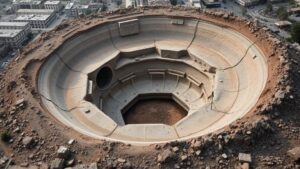Detecting for Lost Coins Around Historic Market Squares
Detecting for Lost Coins Around Historic Market Squares
The search for lost coins within historic market squares represents a fascinating intersection between archaeology, history, and recreational metal detecting. These vibrant communal spaces have served as hubs of economic activity for centuries, making them prime locations for unearthing historical artifacts, including coins. The practice not only highlights the importance of preservation but also the excitement of discovery. In this article, we explore the techniques, tools, and ethical considerations involved in coin detection, while examining notable case studies that illuminate its significance.
The Historical Context of Market Squares
Market squares have been central to urban life since antiquity, with many dating back to medieval times. They served as places for trade, socialization, and public announcements, which ensured that they were frequented by individuals of varying social strata. It is within these dynamic settings that coins were often lost, discarded, or buried. For example, the bustling market square in Florence, Italy, has witnessed economic transactions dating back to the Renaissance, providing a rich backdrop for potential finds.
The Tools and Techniques of Detecting
Effective metal detecting in historic market squares requires a combination of specialized tools and techniques. The primary instrument is a metal detector, with various types catering to different environments and metals. Key considerations when choosing a metal detector include:
- Frequency: Higher frequencies are better for small, low-conductivity items, while lower frequencies excel with larger, conductive objects.
- Discrimination: This feature allows the detector to differentiate between valuable coins and undesirable scrap metal.
- Ground Balance: Essential for reducing interference from mineralized soil, which can impede detection.
Also to metal detectors, diggers, trowels, and even pinpointers are vital for retrieving coins without causing damage to the historical site. Understanding the local regulations regarding excavation is paramount, as permissions may vary considerably.
Case Studies: Notable Finds in Historic Market Squares
Throughout history, numerous significant discoveries have been made in market squares worldwide that reflect the rich past of these locations. One remarkable case occurred in 2015 in the medieval market square of Montpelier, France, where a group of hobbyists found a hoard of over 400 Roman coins dated back to 270 AD. This discovery not only highlighted the economic activities of the time but also provided insights into the transition of coin circulation from the Roman Empire to local governance.
Another well-documented example is the recovery of a collection of medieval coins in London’s Covent Garden. Discovered during a routine examination of the area prior to redevelopment, over 2,000 coins from the 12th to 15th centuries were recovered. This extraordinary find offered significant historical insights into trade and commerce in medieval England.
Challenges and Ethical Considerations
While the allure of finding lost coins can be compelling, there are considerable challenges and ethical concerns associated with searching in historic market squares. One primary challenge is the potential for conflict with local heritage laws designed to protect archaeological sites. Unauthorized digging can lead to legal repercussions and cultural heritage damage.
Also, responsible detecting practices must be employed to ensure that all findings are reported to local authorities or historical societies. Detecting enthusiasts are encouraged to follow the Treasure Act in the UK or its equivalents in other jurisdictions to promote transparency and contribute to historical records.
Real-World Applications and Takeaways
The practice of detecting for lost coins around historic market squares extends beyond mere treasure hunting; it serves as an important function in cultural heritage preservation and education. Here are some actionable takeaways for those interested in this field:
- Research the history of your target area to understand where coins are likely to have been lost.
- Join local metal detecting clubs or forums to share experiences, techniques, and legal knowledge.
- Always obtain permission before detecting on public or private lands.
- Document findings and report significant discoveries to local historical societies.
To wrap up, detecting for lost coins in historic market squares offers a unique opportunity to connect with the past through tangible artifacts. By employing the right tools, techniques, and ethical practices, individuals can engage in this enriching activity while contributing to the preservation of history for future generations.


